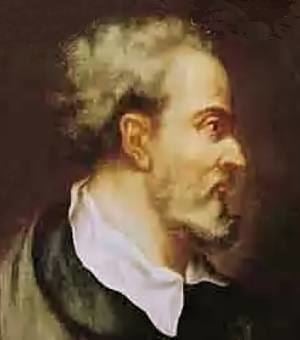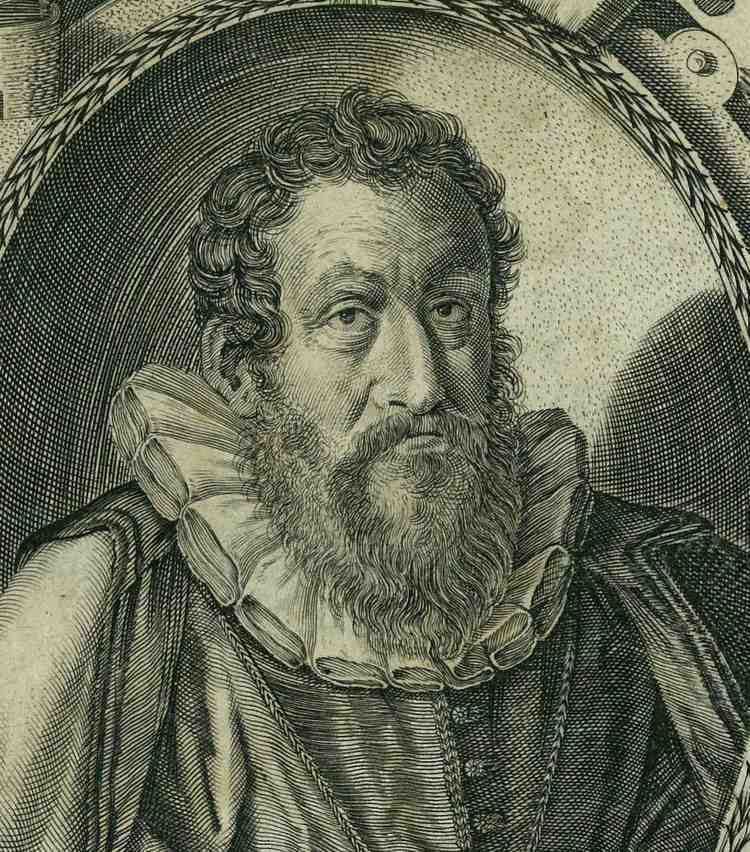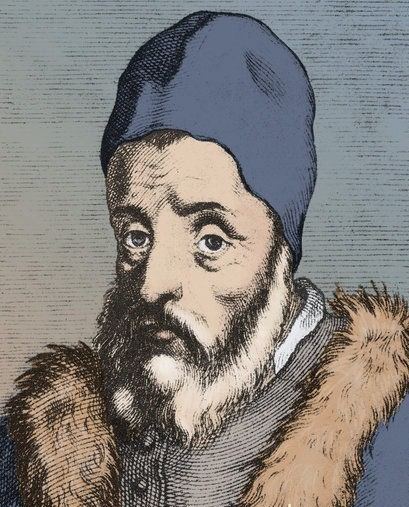Nationality Italian | Name Gerolamo Cardano Role Mathematician | |
 | ||
Born 24 September 1501Pavia ( 1501-09-24 ) Fields Science, maths, philosophy, and literature Known for Polymath, founder of various fields and inventor of several machines Influences Archimedes, Muhammad ibn Musa al-Khwarizmi, Leonardo Fibonacci Parents Chiara Micheria, Fazio Cardano Influenced Blaise Pascal, Pierre de Fermat, Isaac Newton Influenced by Archimedes, Muhammad ibn Musa al-Khwarizmi, Al-Kindi Books Ars Magna, The Book of My Life: De Vita P, The book on games of chance, Ars magna or The rules of al, De libris propriis Similar People Niccolo Fontana Tartaglia, Rafael Bombelli, Lodovico Ferrari, Francois Viete, Pierre de Fermat | ||
Gerolamo cardano
Gerolamo (or Girolamo, or Geronimo) Cardano ([dʒeˈrɔlamo karˈdano]; French: Jérôme Cardan; Latin: Hieronymus Cardanus; 24 September 1501 – 21 September 1576) was an Italian polymath, whose interests and proficiencies ranged from being a mathematician, physician, biologist, physicist, chemist, astrologer, astronomer, philosopher, writer, and gambler. He was one of the most influential mathematicians of the Renaissance, and was one of the key figures in the foundation of probability and the earliest introducer of the binomial coefficients and the binomial theorem in the western world. He wrote more than 200 works on science.
Contents
- Gerolamo cardano
- Gerolamo cardano digital story
- Early life and education
- Mathematics
- Other contributions
- De Subtilitate 1550
- Later years
- Works
- References

Cardano partially invented and described several mechanical devices including the combination lock, the gimbal consisting of three concentric rings allowing a supported compass or gyroscope to rotate freely, and the Cardan shaft with universal joints, which allows the transmission of rotary motion at various angles and is used in vehicles to this day. He made significant contributions to hypocycloids, published in De proportionibus, in 1570. The generating circles of these hypocycloids were later named Cardano circles or cardanic circles and were used for the construction of the first high-speed printing presses.

Today, he is well known for his achievements in algebra. He made the first systematic use of negative numbers, published with attribution the solutions of other mathematicians for the cubic and quartic equations, and acknowledged the existence of imaginary numbers.

Gerolamo cardano digital story
Early life and education
He was born in Pavia, Lombardy, the illegitimate child of Fazio Cardano, a mathematically gifted jurist, lawyer, a close personal friend of Leonardo da Vinci. In his autobiography, Cardano wrote that his mother, Chiara Micheri, had taken "various abortive medicines" to terminate the pregnancy; he was "taken by violent means from my mother; I was almost dead." She was in labour for three days. Shortly before his birth, his mother had to move from Milan to Pavia to escape the Plague; her three other children died from the disease.
After a depressing childhood, with frequent illnesses and the rough upbringing by his overbearing father, in 1520, Cardano entered the University of Pavia against his father's wish, who wanted his son to undertake studies of law, but Girolamo felt more attracted to philosophy and science. During the ongoing war between France and Spain, the authorities in Pavia were forced to close the university, Cardano resumed his studies at the University of Padua, where he graduated in medicine in 1526. His eccentric and confrontational style did not earn him many friends and he had a difficult time finding work after his studies had ended. In 1525, Cardano repeatedly applied to the College of Physicians in Milan, but was not admitted owing to his combative reputation and illegitimate birth. He suffered from impotence throughout the early part of his life, but recovered and married Lucia Banderini in 1531. Before her death in 1546, they had three children, Giovanni Battista (1534), Chiara (1537) and Aldo (1543).
Mathematics
Cardano was the first mathematician to make systematic use of numbers less than zero. He published with attribution the solution of Scipione del Ferro to the cubic equation and the solution of his student Lodovico Ferrari to the quartic equation in his 1545 book Ars Magna. The solution to one particular case of the cubic equation
Cardano was notoriously short of money and kept himself solvent by being an accomplished gambler and chess player. His book about games of chance, Liber de ludo aleae ("Book on Games of Chance"), written around 1564, but not published until 1663, contains the first systematic treatment of probability, as well as a section on effective cheating methods. He used the game of throwing dice to understand the basic concepts of probability. He demonstrated the efficacy of defining odds as the ratio of favourable to unfavourable outcomes (which implies that the probability of an event is given by the ratio of favourable outcomes to the total number of possible outcomes). He was also aware of the multiplication rule for independent events but was not certain about what values should be multiplied.
Other contributions
Cardano's work with hypocycloids led him to the "Cardan gear mechanism," in which a pair of gears with the smaller being one-half the size of the larger gear is used converting rotational motion to linear motion, with greater efficiency and precision than a Scotch yoke, for example.
Cardano made several contributions to hydrodynamics and held that perpetual motion is impossible, except in celestial bodies. He published two encyclopedias of natural science which contain a wide variety of inventions, facts, and occult superstitions. He also introduced the Cardan grille, a cryptographic tool, in 1550.
Someone also assigned to Cardano the credit for the invention of the so-called Cardano's Rings, also called Chinese Rings, but it is very probable that they predate Cardano.
Significantly, in the history of education of the deaf, he said that deaf people were capable of using their minds, argued for the importance of teaching them, and was one of the first to state that deaf people could learn to read and write without learning how to speak first. He was familiar with a report by Rudolph Agricola about a deaf mute who had learned to write.
De Subtilitate (1550)
As quoted from Charles Lyell's Principles of Geology:
The title of a work of Cardano's, published in 1552, De Subtilitate (corresponding to what would now be called transcendental philosophy), would lead us to expect, in the chapter on minerals, many far fetched theories characteristic of that age; but when treating of petrified shells, he decided that they clearly indicated the former sojourn of the sea upon the mountains.
Later years
Two of Cardano's children—Giovanni and Aldo Battista—came to ignoble ends. Giovanni Battista, Cardano's eldest and favorite son, was tried and beheaded in 1560 for poisoning his wife, after he discovered that their three children were not his. Aldo Battista was a gambler, who stole money from his father and was disinherited by him in 1569.
Cardano moved from Pavia to Bologna, in part because he believed that the decision to execute Giovanni was influenced by Gerolamo's battles with the academic establishment in Pavia, and his colleagues' jealousy at his scientific achievements and also because he was beset with allegations of sexual impropriety with his students. Cardano was arrested by the Inquisition in 1570 for unknown reasons, and forced to spend several months in prison and abjure his professorship. He moved to Rome, and received a lifetime annuity from Pope Gregory XIII (after first having been rejected by Pope Pius V) and finished his autobiography. He was accepted in the Royal College of Physicians, and as well as practising medicine he continued his philosophical studies until his death in 1576.
